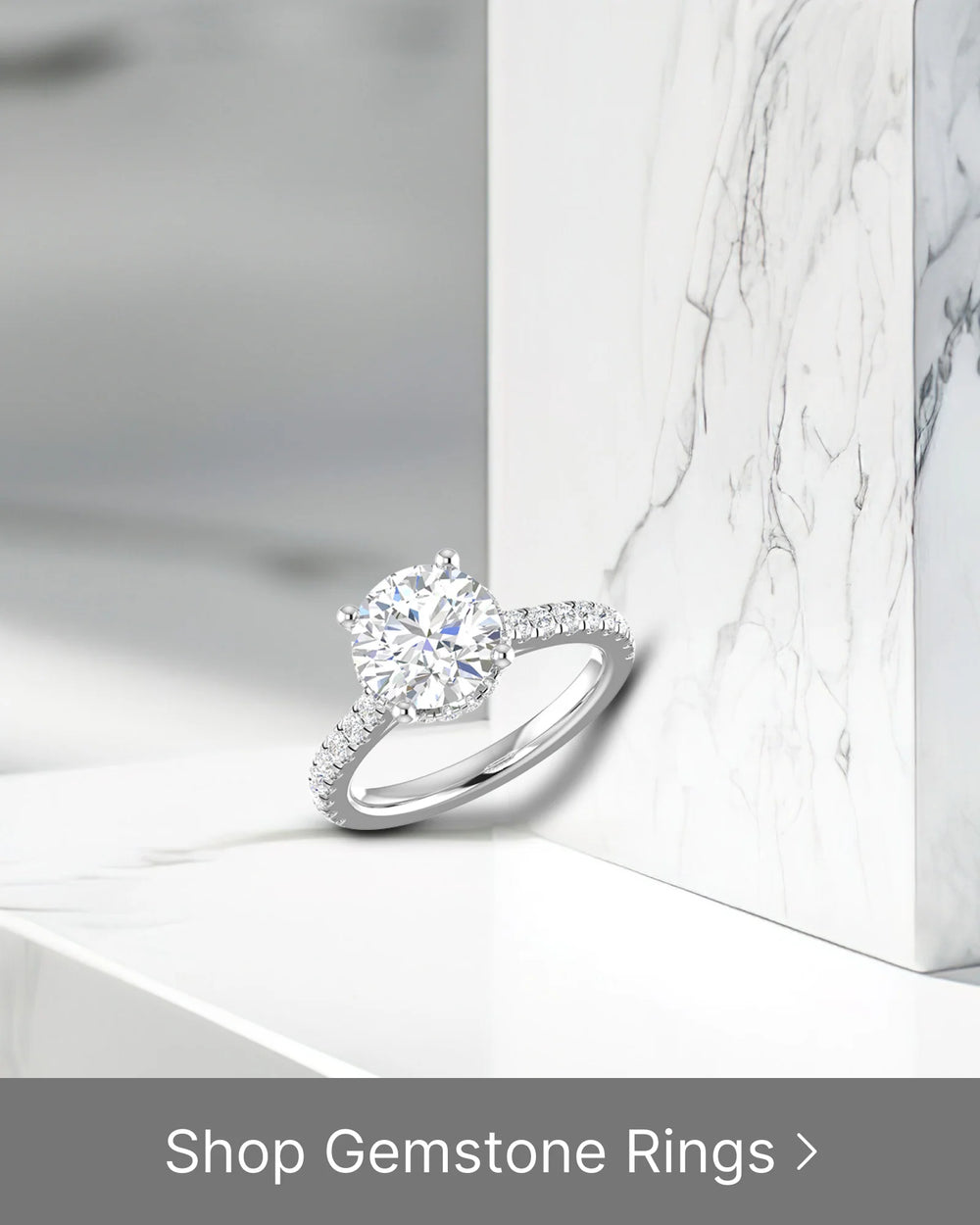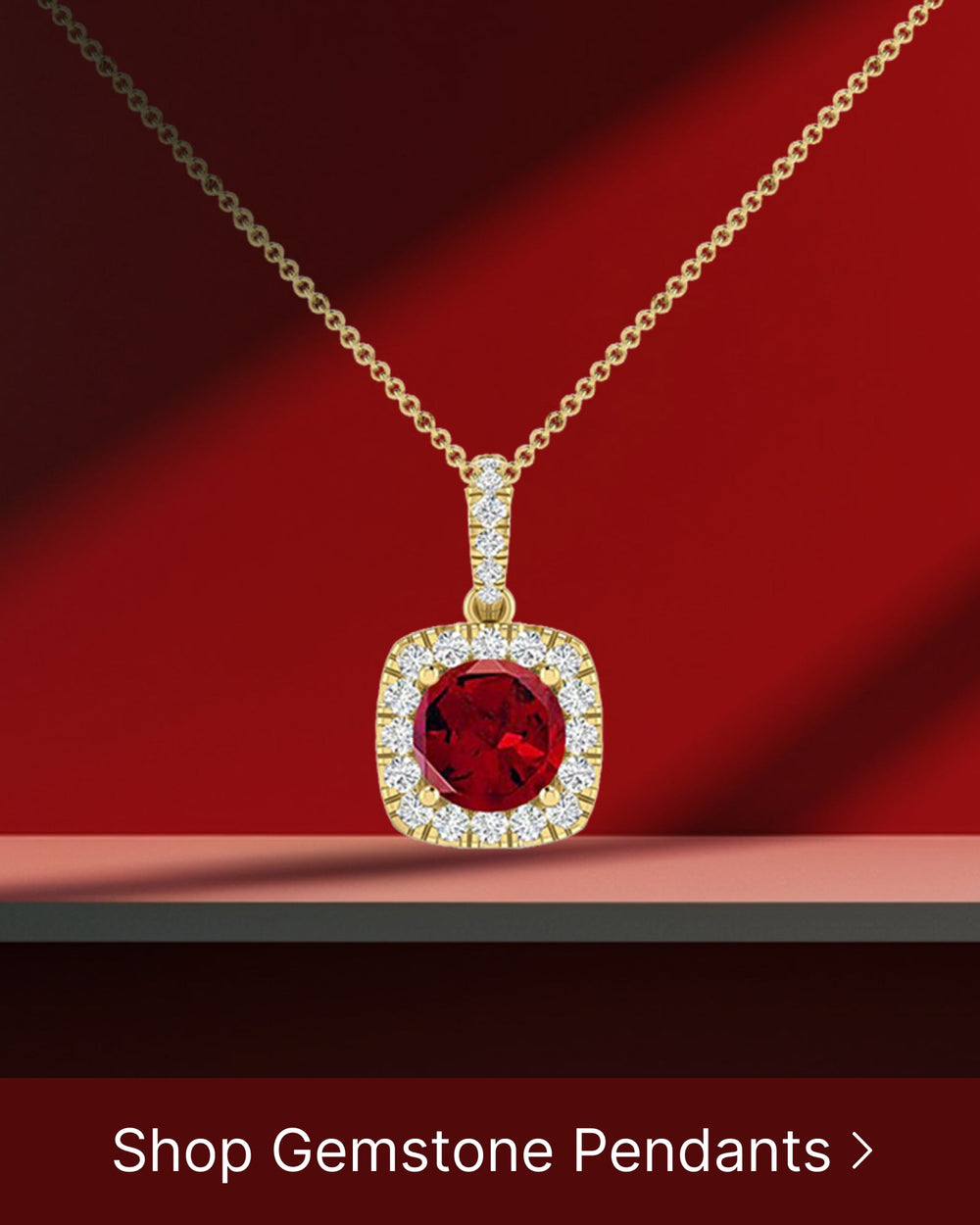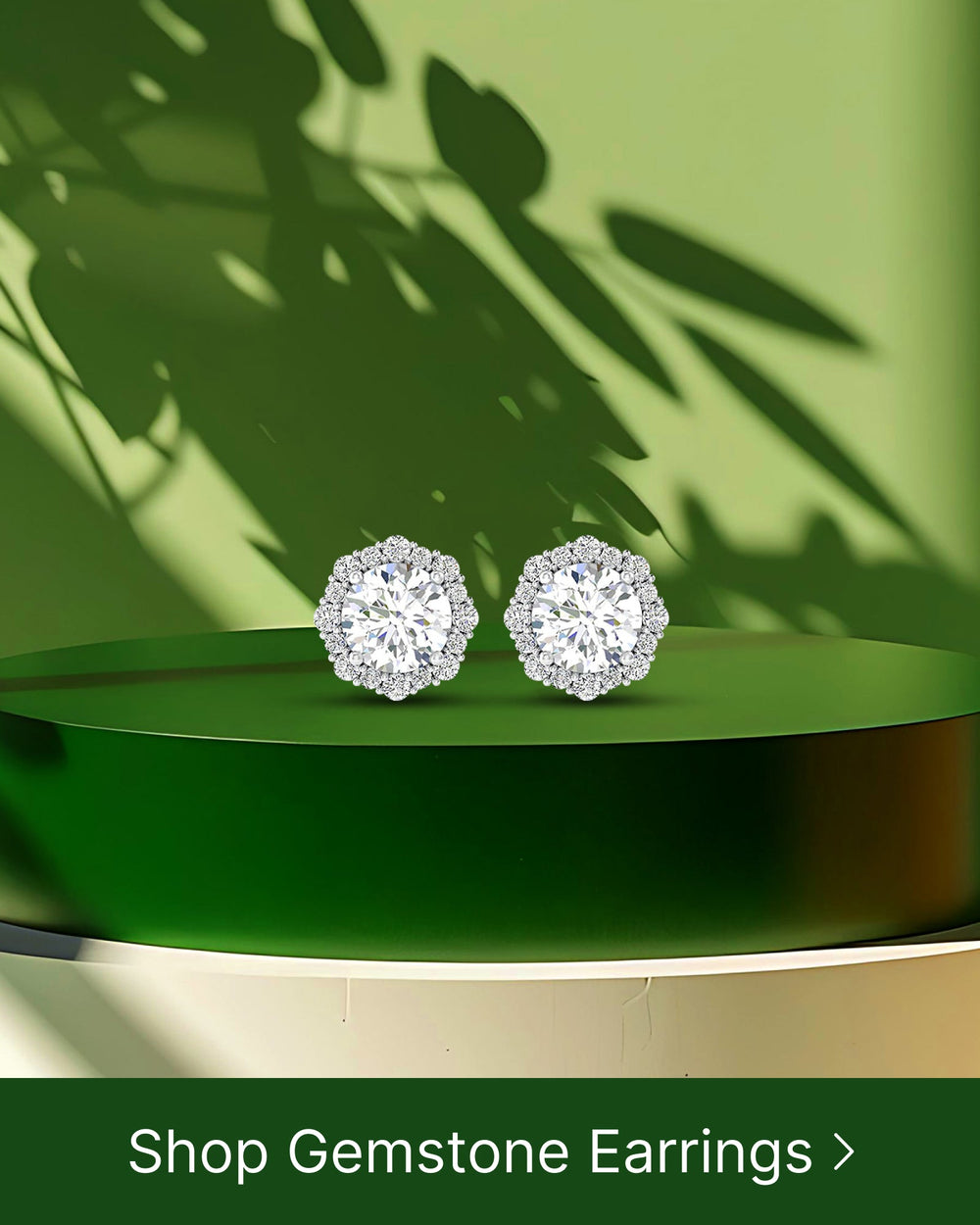The diamond is a gemstone that has captivated humans for centuries with its stunning brilliance and mesmerizing beauty. In this article, we will explore the many facets of the diamond diamond, from its origin and unique characteristics to the science behind its brilliance, and its symbolism and significance in various cultures. We will also delve into its role in the jewelry industry and provide tips on caring for your precious gemstone.
Understanding the Diamond Diamond
The journey of a diamond diamond begins deep within the Earth's mantle, where intense heat and pressure transform carbon into this lustrous gemstone. It takes millions of years for diamonds to form, under conditions that are only found in select areas of the world.
Some of the most famous diamond mines are located in South Africa, Russia, Botswana, and Canada. These mines have become legendary for their rich deposits of diamonds, attracting miners and gem enthusiasts from all over the world. The mining process itself is a fascinating and meticulous operation, involving the use of heavy machinery and skilled workers who carefully extract the precious stones from the earth.
Each diamond diamond carries a unique geological history, which adds to its allure and value. The geological journey of a diamond begins with volcanic activity. When magma rises to the surface, it brings along with it small pieces of the Earth's mantle, known as xenoliths, which contain diamonds. These xenoliths are then scattered across the surface, waiting to be discovered by those who seek the beauty and rarity of diamonds.
The Unique Characteristics of the Diamond Diamond
Diamond diamonds are renowned for their exceptional hardness, ranking 10 on the Mohs scale. This makes them the hardest natural substance known to man. Their hardness is a result of the strong covalent bonds between carbon atoms, which create a rigid and durable structure.
Additionally, diamonds possess a remarkable refractive index that allows them to reflect and refract light in a way that creates unparalleled brilliance. When light enters a diamond, it undergoes total internal reflection, bouncing off the diamond's facets and creating a mesmerizing display of light and color. This optical property is what gives diamonds their signature sparkle and fire.
The crystal structure of diamonds, formed by tightly bonded carbon atoms, contributes to their durability and dispersion of light. The arrangement of carbon atoms in a diamond lattice is incredibly strong, making it resistant to scratches and damage. This durability ensures that diamonds can withstand the test of time, making them perfect for jewelry that can be passed down through generations.
Furthermore, diamonds come in a variety of colors, ranging from the rare and highly prized colorless diamonds to vibrant yellows, pinks, blues, and greens. Each hue signifies a different chemical composition and creates a unique visual experience. The presence of impurities or structural defects within the diamond's crystal lattice can cause these captivating colors to emerge. These colored diamonds, also known as fancy diamonds, are highly sought after by collectors and connoisseurs for their rarity and beauty.
In conclusion, the diamond diamond is a truly remarkable gemstone that captivates the imagination and hearts of people around the world. Its journey from the depths of the Earth to the hands of its wearer is a testament to the beauty and wonder of nature. Whether admired for its geological history, exceptional hardness, or dazzling colors, the diamond diamond continues to be a symbol of love, luxury, and everlasting beauty.
The Science Behind the Brilliance
When it comes to diamonds, their brilliance is not just a matter of aesthetics, but also a result of fascinating scientific principles. The way a diamond interacts with light is what truly makes it shine.
The Role of Light in Diamond Brilliance
When light enters a diamond, it embarks on a captivating journey within the stone. This journey is known as total internal reflection, a phenomenon that occurs due to the diamond's unique optical properties. As the light enters the diamond, it encounters the facets of the diamond's cut, which act as mirrors. Instead of passing through the diamond, the light bounces off these facets and is reflected back to the viewer's eyes.
It is this reflection of light that gives a diamond its mesmerizing sparkle and brilliance. The angles and proportions of a diamond's cut play a crucial role in maximizing its brilliance. A well-cut diamond ensures that light entering the stone is refracted and dispersed in a way that enhances its fire and scintillation.
The Impact of Cut and Shape on Brilliance
The cut and shape of a diamond go hand in hand in determining its brilliance. Each diamond shape, whether it is a classic round brilliant, a sparkling princess cut, or an elegant emerald cut, has its own unique play of light.
Furthermore, the precision of a diamond's cut greatly affects how effectively it reflects light. A perfectly cut diamond will exhibit exceptional brilliance, as every facet is meticulously crafted to optimize the reflection and refraction of light. On the other hand, a poorly cut diamond may appear lifeless and lackluster, regardless of its other qualities.
It is important to note that the brilliance of a diamond is not solely dependent on its cut and shape. Other factors, such as the diamond's clarity, color, and carat weight, also contribute to its overall beauty. However, the cut remains a fundamental aspect that can truly make a diamond shine.
Next time you admire a dazzling diamond, take a moment to appreciate the intricate science behind its brilliance. From the way light interacts with the diamond's facets to the precision of its cut, every aspect contributes to the captivating sparkle that has fascinated humans for centuries.
The Symbolism and Significance of the Diamond Diamond
The Diamond Diamond in History and Culture
Throughout history, diamonds have been regarded as symbols of wealth, power, and eternal love. Ancient civilizations believed that diamonds possessed magical properties and attributed them with the ability to ward off evil and provide protection.
In ancient India, diamonds were highly revered and considered to be the tears of the gods. They were believed to bring good fortune and protect against illness and misfortune. The Sanskrit word for diamond, "vajra," also means thunderbolt, emphasizing the diamond's strength and invincibility.
In ancient Greece, diamonds were associated with the gods and were believed to be the fragments of stars that had fallen to Earth. They were seen as divine and were often used in religious ceremonies and rituals.
In more recent times, diamonds have become synonymous with engagement rings, symbolizing love and commitment. The tradition of diamond engagement rings can be traced back to the late 15th century when Archduke Maximilian of Austria proposed to Mary of Burgundy with a diamond ring. This romantic gesture set a trend among European nobility, and diamond engagement rings became a symbol of wealth and status.
The Diamond Diamond in Modern Times
In the modern era, diamonds continue to hold a special place in our hearts and are often associated with luxury and prestige. From red carpet events to glamorous weddings, diamonds continue to adorn celebrities and ordinary individuals alike.
However, diamonds are not just a symbol of opulence; they also have practical applications. Beyond their allure and beauty, diamonds have played a significant role in various industries. Their exceptional hardness makes them ideal for cutting and drilling tools, enabling precise and efficient work in fields such as construction and mining.
Furthermore, diamonds have found their way into technology, contributing to advancements in various fields. Their exceptional thermal conductivity makes them valuable in cooling systems for electronics, ensuring that devices operate at optimal temperatures. Diamonds are also used in high-performance lasers, enabling precise and powerful applications in industries such as medicine and manufacturing.
Moreover, diamonds have become a symbol of sustainability and ethical sourcing. With increasing awareness of the environmental and social impact of mining, the diamond industry has made significant strides in ensuring responsible practices. From supporting local communities to implementing stringent environmental standards, the diamond industry is committed to minimizing its footprint and promoting ethical sourcing.
In conclusion, diamonds have a rich history and cultural significance that extends beyond their beauty and value. From their mystical associations in ancient civilizations to their role in modern technology and industry, diamonds continue to captivate our imagination and hold a special place in our hearts.
The Diamond Diamond in the Jewelry Industry
The Process of Crafting Diamond Diamond Jewelry
Transforming a diamond diamond into a piece of exquisite jewelry requires skilled craftsmanship. From selecting the perfect diamond to designing the setting, numerous steps go into creating a masterpiece.
Every diamond is cut and shaped to showcase its unique brilliance. Jewelers meticulously examine each diamond and determine the most suitable design that will enhance its beauty and create a stunning finished piece.
The Market for Diamond Diamond Jewelry
The market for diamond diamond jewelry remains strong, with demand fueled by a desire for elegance and a timeless investment. Diamonds are often purchased to commemorate special occasions such as engagements, birthdays, and anniversaries.
However, it is essential for consumers to be aware of the ethical and sustainable practices surrounding the diamond industry. Conflict-free diamonds, certified by organizations like the Kimberley Process, help ensure that diamonds are sourced responsibly and do not contribute to human rights abuses or conflicts.
Caring for Your Diamond Diamond
Cleaning and Maintenance Tips
To keep your diamond diamond looking radiant, regular cleaning and maintenance are essential. You can clean your diamond at home by gently scrubbing it with a soft toothbrush and mild soap or using specialized diamond cleaning solutions.
It is also recommended to have your diamond professionally cleaned and inspected by a jeweler at least once a year. They can check for any potential damage, loose settings, or other issues that may affect the integrity of your precious diamond.
Ensuring the Longevity of Your Diamond Diamond
To ensure the longevity of your diamond diamond, it is important to handle it with care. Avoid exposing it to harsh chemicals or abrasive materials that can scratch or damage the stone.
Additionally, store your diamond diamond separately from other jewelry to prevent any accidental scratching. Consider keeping it in a soft pouch or a jewelry box with compartments to minimize contact with other items.
In conclusion, the brilliance of the diamond diamond is a result of its unique characteristics, the science behind its cut and shape, and its symbolic meaning in various cultures. As you admire the sparkle and radiance of your diamond, remember to care for it diligently, ensuring that its brilliance continues to shine throughout the years.





